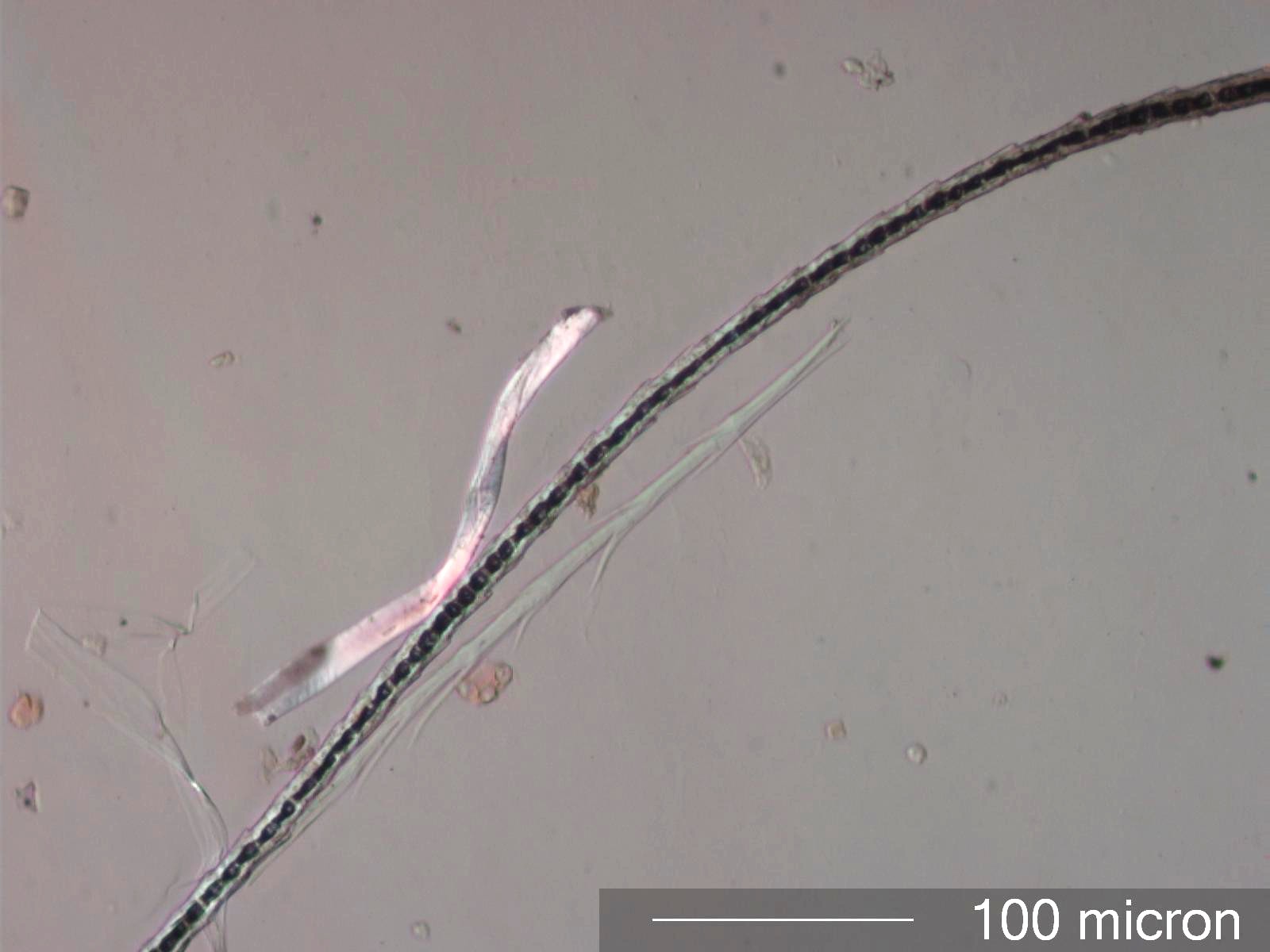Feather, Cat Hair, and Mercerized Cotton
The top, bright short fiber is mercerized cotton fiber with
a red dye. The fiber below it is the cat
hair. The bottom fiber is a bird feather barbule. This image shows some of the
morphological differences
for these different types of fibers.
Transmitted Off Cross Polarized Light Illumination
Definition/Function:
Significance in the Environment:
Characteristic Features:
The bird feather barbule has little barbs at regularly spaced nodes.
The spacing of the nodes, the shape of the nodes, the shape of the barbs, and the
distribution of pigment
help identify the type of feather (down, flight, contour, etc.) and the genera of the
bird. The cat hair
is an example of a mamalian hair. There are three main parts of the hair shaft; the
surface cuticle, the
cortex, and the central medulla. The cuticle is a series of "scales". The shape and
spacing of the scales
helps in the identification of the genius of the animal along with the size, shape, and
fine structure of
the medulla. The distribution of pigment granuals, vacuoles, fissures, and the staining
of the cortex adds
more detail to the characterization of the hair. It is possible to identify a specific
individual in a
population with a reasonably high probability by fully characterizing the hair.
Mercerized cotton has lost
the characteritic "twist" of cotton as a result of being treated chemically with an
alkaline solution. Its
optical properties also change in that the birefringence is reduced and the change in
intensity of the
retardation color is greater on rotation than with mature, untreated cotton.
Associated Particles:
References:


